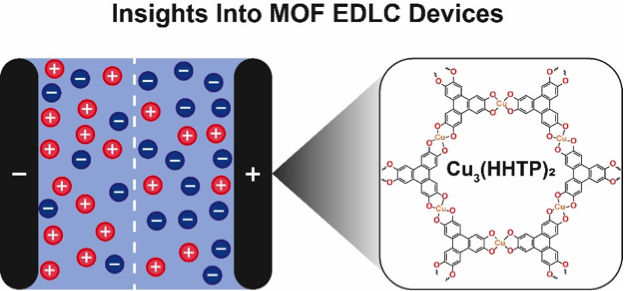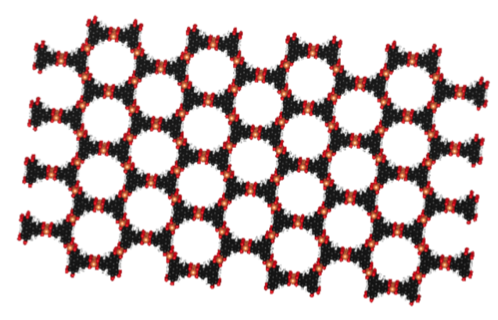Mess is best: disordered structure of battery-like devices improves performance
Published: Science, 2024, 384, 321-325
Research led by Xinyu Liu, supervised by Prof. Alexander Forse and Prof. Clare Grey, has opened new realm for understanding the performance of supercapacitor devices.
The research, using experimental and computer modelling techniques to study the porous carbon electrodes, found that electrodes with a more disordered chemical structure stored far more energy than electrodes with a highly ordered structure. 'This could be a turning point for a field that’s been stuck for a little while.' - Alex Forse
Find out more with our lay summary press release here.
Interlaboratory study assessing the analysis of supercapacitor electrochemistry data
Published: J. Power Sources, 2023, 585, 233637
Research led by Jamie Gittins, Ada Chen and Dr Alexander Forse has addressed reproducibility in the analysis of supercapacitor test data.
We shared supercapacitor analysis files with 14 different laboratories around the world, and asked them to report back different performance parameters which help to determine the overall performance of the device. The study, revealed some interesting variability between different research groups. To find out more read below or follow the link here.
Enhancing the capacity of supercapacitive swing adsorption CO2 capture by tuning charging protocols
Published: Nanoscale, 2022, 14, 7980-7984
Published: J. Mater. Chem. A., 2021, 9, 16006-16015
To reduce greenhouse gas emissions in line with the Paris agreement, a significant shift towards electric vehicles and renewable resources is required. The development of improved energy storage devices, including those that can charge and discharge more quickly than the existing commercial batteries that are in our phones and laptops, will be critical to facilitate these changes. These fast-charging energy storage devices are known as electric double-layer capacitors (EDLCs).
Unf ortunately, current state-of-the-art EDLCs store too little energy and so are not used widely. One way to increase the amount of energy stored in an EDLC is to improve the materials that they are made from. Recently, a new class of materials for use in these devices has been discovered known as two-dimensional metal-organic frameworks (2D MOFs). These materials are formed from the coordination of metal ions to organic molecules to form highly porous structures as shown below. Their high porosity means they are very promising for use in EDLCS, and initial investigations confirmed this promise. They could lead to improvements in EDLC performances, allowing for their more widespread implementation. However, much is still unknown about this class of materials.
ortunately, current state-of-the-art EDLCs store too little energy and so are not used widely. One way to increase the amount of energy stored in an EDLC is to improve the materials that they are made from. Recently, a new class of materials for use in these devices has been discovered known as two-dimensional metal-organic frameworks (2D MOFs). These materials are formed from the coordination of metal ions to organic molecules to form highly porous structures as shown below. Their high porosity means they are very promising for use in EDLCS, and initial investigations confirmed this promise. They could lead to improvements in EDLC performances, allowing for their more widespread implementation. However, much is still unknown about this class of materials.
In this study, we co mpare the performances of two members of this family of materials in EDLCs to gain more information on their behaviour in energy storage devices. Specifically, we investigate how changes in the chemical structure of 2D MOFs impact the performance. We also compare the performance of one family member with a current material used in state-of-the-art industrial EDLCs, porous carbons, to assess their potential for use in commercial devices. The insights presented in this work will help to improve EDLCs made using this new class of materials in the future.
mpare the performances of two members of this family of materials in EDLCs to gain more information on their behaviour in energy storage devices. Specifically, we investigate how changes in the chemical structure of 2D MOFs impact the performance. We also compare the performance of one family member with a current material used in state-of-the-art industrial EDLCs, porous carbons, to assess their potential for use in commercial devices. The insights presented in this work will help to improve EDLCs made using this new class of materials in the future.
